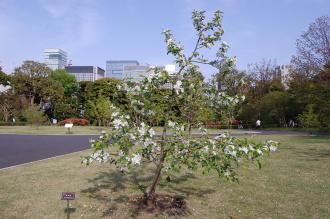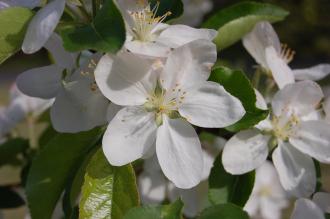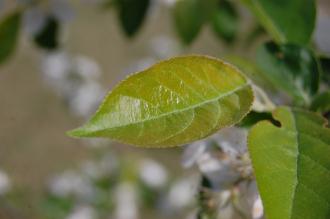
Malus asiatica (18/04/2015, Imperial Palace East Garden, Tokyo, Japan)
Position: Full sun to partial shade
Flowering period: Spring
Soil: Moist, well drained
Eventual Height: 6m
Eventual Spread: 6m
Hardiness: 4a, 4b, 5a, 5b, 6a, 6b, 7a, 7b, 8a, 8b, 9a, 9b
Family: Rosaceae
Malus asiatica is a deciduous tree with a rounded habit. Its mid green leaves are ovate to elliptic with serrulate margins, up to 11cm long and 5.5cm broad. Its leaves turn yellow/ orange in autumn before they fall. Its white flowers are up to 4cm across and appear at the same time as its leaves. Its red/ yellow fruit are pomes, up to 5cm across.

Malus asiatica Flower (18/04/2015, Imperial Palace East Garden, Tokyo, Japan)
Malus asiatica, commonly known as Chinese Pearleaf Crabapple, is native to China. In its native habitat it grows on open slopes.
The etymological root of the binomial name Malus is the ancient Latin name for the apple tree. Asiatica is from the Latin menaing ‘from Asia’.
The landscape architect may find Malus asiatica useful as a small tree with attractive spring flowers, autumn leaf color and edible fruit.

Malus asiatica Leaf (18/04/2015, Imperial Palace East Garden, Tokyo, Japan)
Ecologically, Malus asiatica flowers are attractive to pollinating insects. Its fruit are attractive to birds and some mammals (including humans).
Malus asiatica prefers moist, fertile, well-drained soils. It tolerates most pH of soil.
Malus asiatica requires little maintenance.

Landscape Architecture

